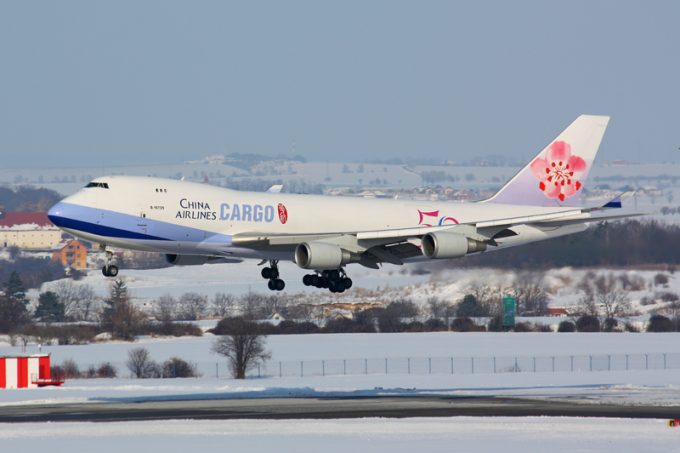Rates still slipping as peak season recedes and port strike threat subsides
Freight rates are continuing their downward correction following the premature peak season and front-loading of ...
GM: RAISING THE ROOF GGM: IN FULL THROTTLE GZIM: MAERSK BOOST KNIN: READ-ACROSSMAERSK: NOT ENOUGHMAERSK: GUIDANCE UPGRADEZIM: ROLLERCOASTERCAT: HEAVY DUTYMAERSK: CATCHING UP PG: DESTOCKING PATTERNSPG: HEALTH CHECKWTC: THE FALLGXO: DEFENSIVE FWRD: RALLYING ON TAKEOVER TALKODFL: STEADY YIELDVW: NEW MODEL NEEDEDWTC: TAKING PROFIT
GM: RAISING THE ROOF GGM: IN FULL THROTTLE GZIM: MAERSK BOOST KNIN: READ-ACROSSMAERSK: NOT ENOUGHMAERSK: GUIDANCE UPGRADEZIM: ROLLERCOASTERCAT: HEAVY DUTYMAERSK: CATCHING UP PG: DESTOCKING PATTERNSPG: HEALTH CHECKWTC: THE FALLGXO: DEFENSIVE FWRD: RALLYING ON TAKEOVER TALKODFL: STEADY YIELDVW: NEW MODEL NEEDEDWTC: TAKING PROFIT

China Airlines Cargo is whittling down its 747 freighter fleet in favour of more modern aircraft with lower operating costs.
It currently has 16 747-400Fs, of which six are inactive. It recently sold one, according to Cargo Facts, but delays to its 777F orders, with four due to arrive by Q1 next year, means it may also delay the retirement of its 747F fleet. It currently operates six 777Fs.
Eddy Liu, senior vice president of cargo for China Airlines, told HACTL magazine HACTLINK that the freighter fleet will shrink.
“Based on recent market developments and cargo volume trends, and considering the resumption of passenger flights and their routes and frequencies, we plan to maintain a fleet of 18-20 freighters in the future.”
And the 747s are in the firing line. “The air cargo industry has been hit hard by rising fuel prices and falling freight rates. This had a huge impact on the operation of our 747-400Fs.”
He explained: “Since the outbreak of the Ukraine–Russia conflict, international aviation fuel prices have remained high, and fuel prices and crude oil prices have de-linked; this has caused higher operating costs.
“In addition, the slowdown of consumer demand has led to a drop in freight rates, resulting in declining cargo revenue. The operating cost of existing 747-400Fs is relatively high, making it difficult to maintain the high profitability seen during the pandemic. Therefore, the addition of 777Fs will effectively ease our operational pressure.”
However, he acknowledged the unique nature of the 747’s nose cargo door, which mean the airline will operate a mixed freighter fleet for longer.
“Cargo owners will have to adapt to the size requirements of new freighters such as the 777F or A350F by redesigning their packaging to reduce the size of the cargo, or use other transportation methods.
“Our company will adjust the sales strategy and actively review the use of our existing fleet, as well as the development of new freighters, so as to respond to the ever-changing air cargo market and prepare for the introduction of the next generation of freighters.”
Mr Liu noted in the HACTL interview that the market to the US had “cooled” since the end of the pandemic, while there is also more belly capacity in the market.
“This means changes to both the demand and supply sides of the air cargo market. So we have adjusted our operational strategy on cargo transportation, reducing the proportion of flights to the United States, strengthening the import and export services intra-Asia, and expanding our coverage of the sources of goods from Asia to Europe.”
While he acknowledged some sourcing shifts in Asia, he said there was “still no significant export demand from neighbouring Southeast Asia countries”.
China Airlines last week said it would lease two A350-900s, with the first delivering in the fourth quarter, while at the Paris Air Show the carrier switched eight options for 787s into firm orders.
Comment on this article